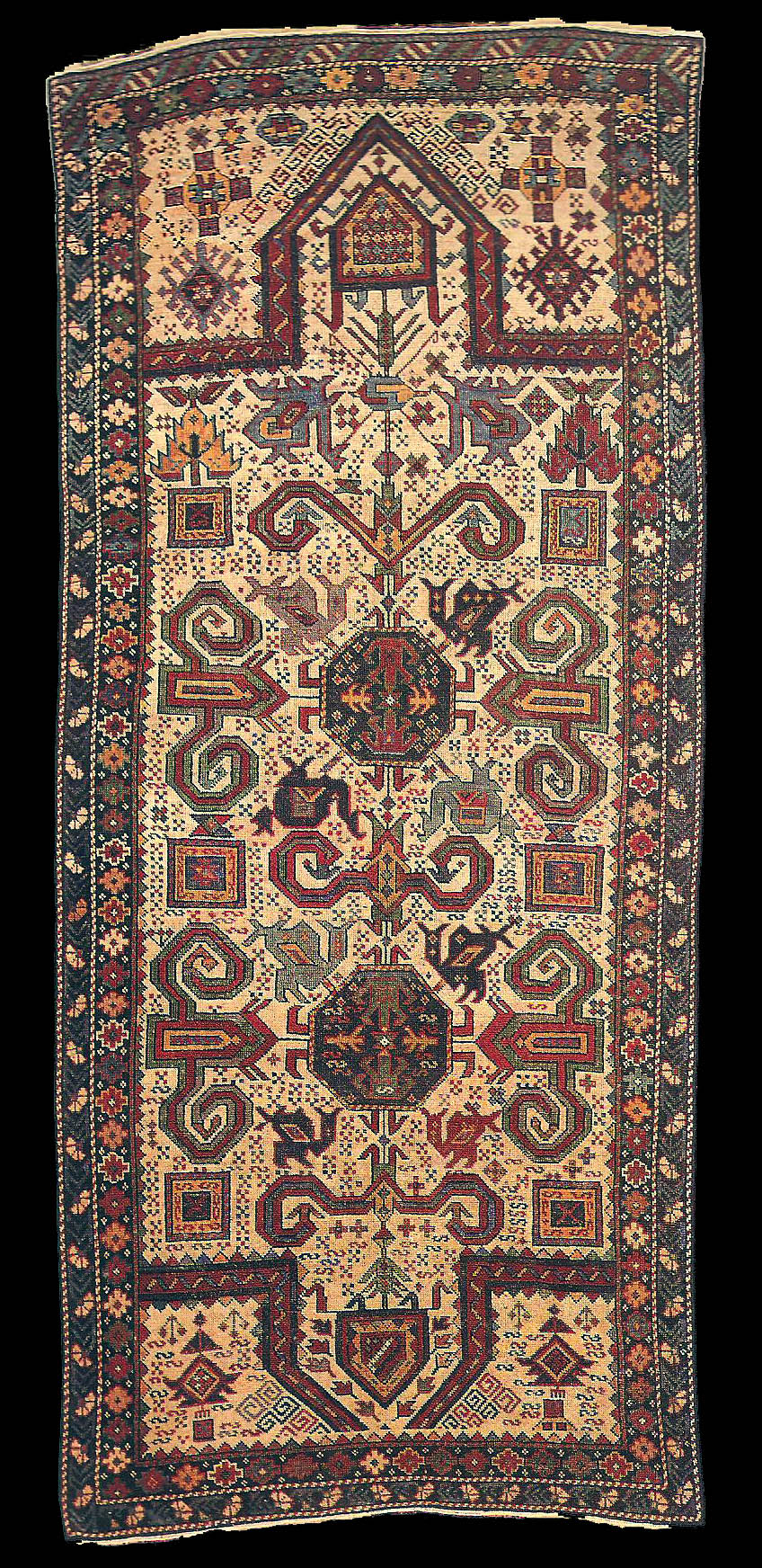|
Perepedils were rather harshly treated by Nicolas Fokker in his book
Caucasian Rugs of Yesterday, where he wrote, 'If you've seen one of
these, you've seen the lot. All appear to have been made on a single model.'
While this damning description may be appropriate for some late nineteenth-
and early twentieth-century examples, it certainly does not describe the
earlier pieces. The format of this rug, for instance, is quite eccentric,
with prayer niches at either end. It has been suggested that this and
similar examples were woven for export to the West, rather than for prayer.
I would question this theory on two counts, however: only one other
double-niche Perepedil is known to me (plate 49), and Western demand did not
materialize until very late in the nineteenth century.
The earliest pieces, some of which date from the early nineteenth century,
generally have a white ground as in this example, James Burns, in The
Caucasus: Traditions in Weaving, illustrates a wonderful archaic
ivory-ground rug - possibly a benchmark piece for this type—that he dates to
the first third of the nineteenth century. Christine Klose has proposed that
the Perepedil design has its roots in 17th and 18th century Azerbaijani silk
embroideries, and places the type shown here as the fourth and final phase
of the design's development.
Text and image from Ralph Kaffel's Caucasian Prayer Rugs.
 |

